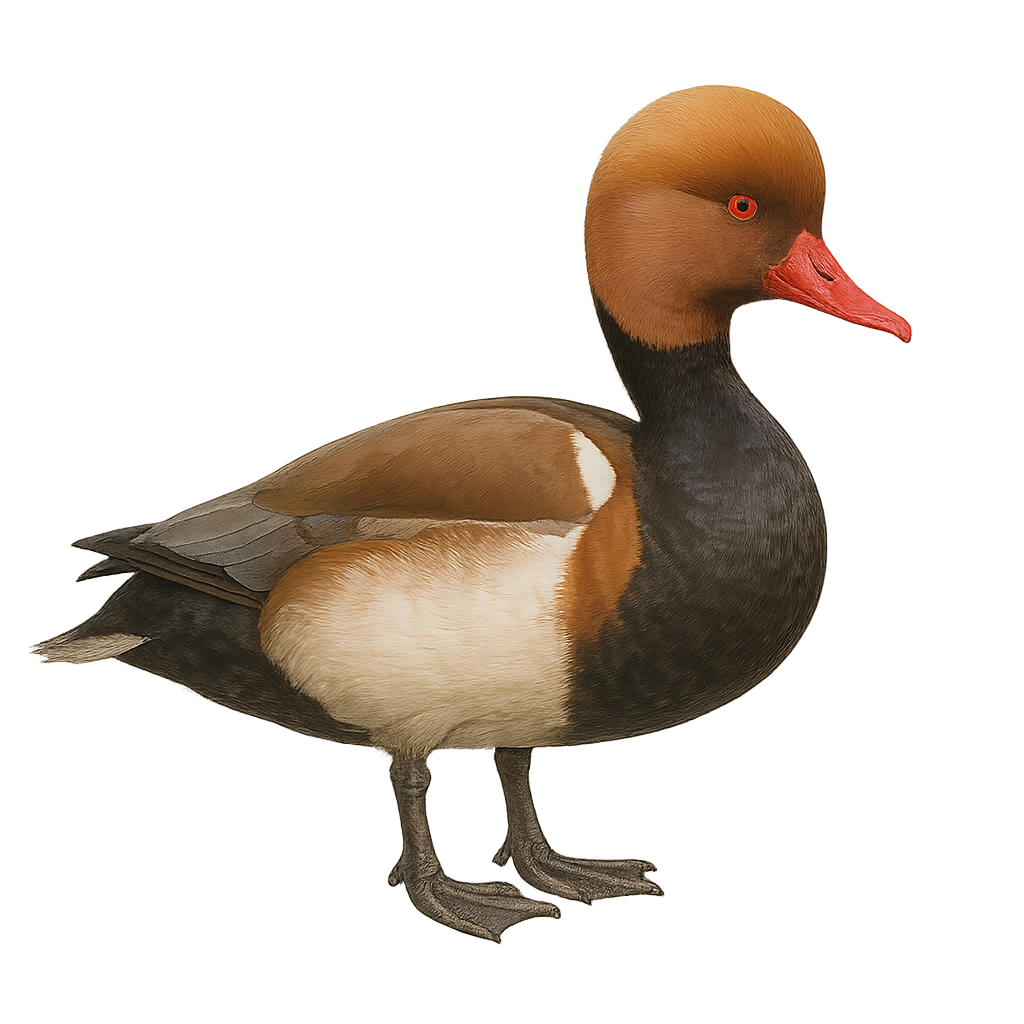Your wildlife photography guide.
Explore the red-crested pochard in detail, study its behavior, prepare your shots.
Where to observe and photograph the red-crested pochard in the wild
Learn where and when to spot the red-crested pochard in the wild, how to identify the species based on distinctive features, and what natural environments it inhabits. The WildlifePhotographer app offers tailored photography tips that reflect the red-crested pochard’s behavior, helping you capture better wildlife images. Explore the full species profile for key information including description, habitat, active periods, and approach techniques.
Red-crested Pochard
Scientific name: Netta rufina

IUCN Status: Least Concern
Family: ANATIDAE
Group: Birds
Sensitivity to human approach: Not very shy
Minimum approach distance: 30 m
Courtship display: April to May
Incubation: 26-28 jours
Hatchings: April to June
Habitat:
Eutrophic lakes, ponds rich in aquatic vegetation, reed beds
Activity period :
Primarily active during the day, with peak activity in the morning and late afternoon.
Identification and description:
The Red-crested Pochard is a medium-sized diving duck, measuring between 53 and 58 cm in length with a wingspan of 84 to 88 cm. The male is notable for its rounded, bright reddish-orange head, vivid red bill, black chest, and white flanks. The female is more subdued, with brown plumage, pale cheeks, and a dark bill. This species inhabits eutrophic lakes and ponds rich in aquatic vegetation, often bordered by reed beds. It primarily feeds on aquatic plants like pondweeds and charophytes, but also consumes aquatic invertebrates, including mollusks and insects. Migratory, the Red-crested Pochard winters around the Mediterranean and the Black Sea. Although listed as Least Concern by the IUCN, it is sensitive to the degradation of wetlands.
Recommended lens:
300 mm – adjust based on distance, desired framing (portrait or habitat), and approach conditions.
Photography tips:
Use a telephoto lens to photograph the Red-crested Pochard, especially during its dives or when resting near reed beds. Soft morning or evening light highlights the contrasts of its plumage. Be discreet and patient to observe natural behaviors.
The WildlifePhotographer App is coming soon!
Be the first to explore the best nature spots, track rutting seasons, log your observations, and observe more wildlife.
Already 1 439 wildlife lovers subscribed worldwide

